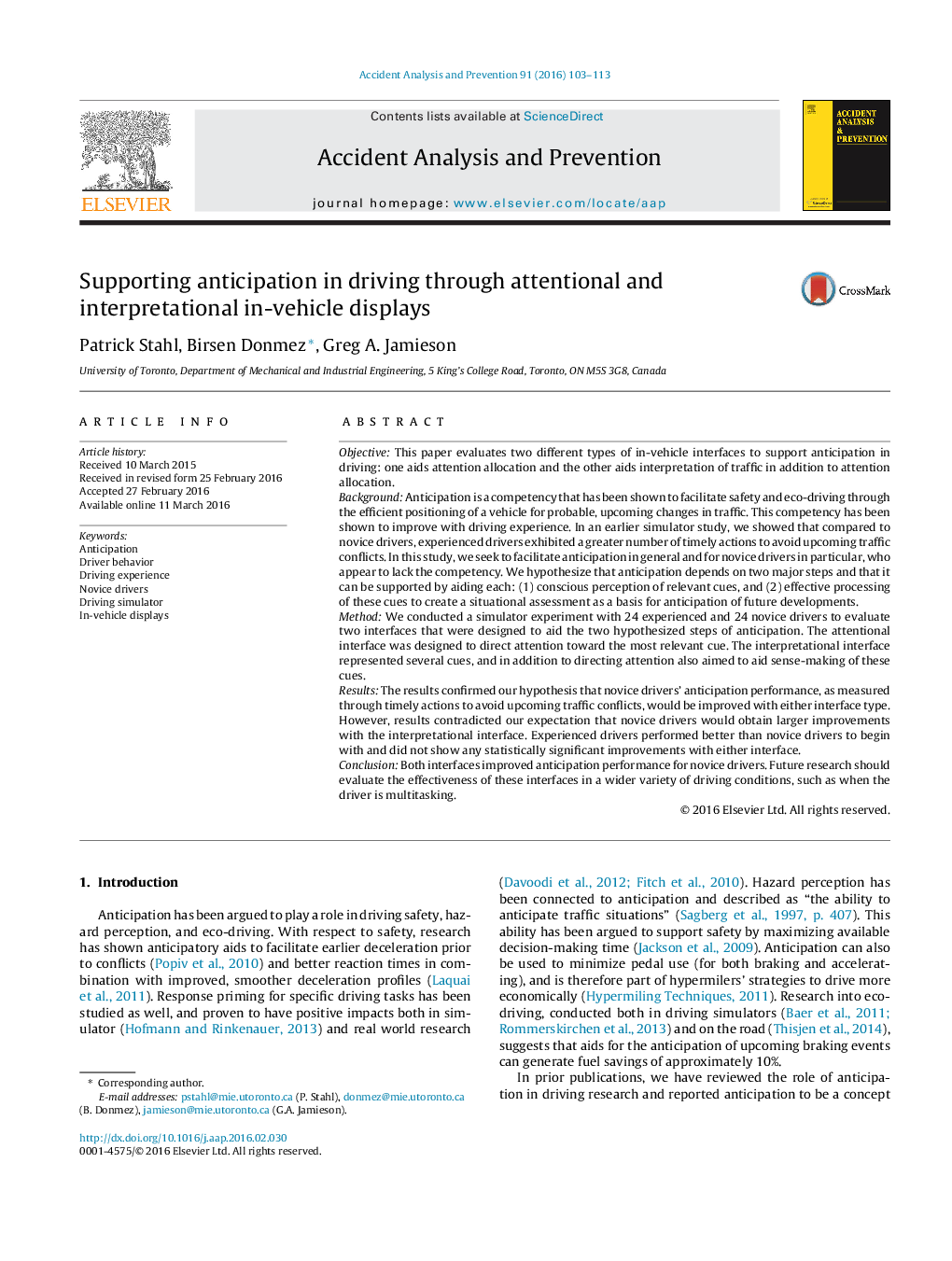| کد مقاله | کد نشریه | سال انتشار | مقاله انگلیسی | نسخه تمام متن |
|---|---|---|---|---|
| 571985 | 1452906 | 2016 | 11 صفحه PDF | دانلود رایگان |
• We evaluated two anticipatory interfaces with 24 experienced and 24 novice drivers.
• Attentional interface was designed to direct attention to relevant traffic cues.
• Interpretational one supported both attention allocation and interpretation of cues.
• Experienced drivers exhibited more anticipatory actions than novices.
• Novice drivers improved with both interfaces when the interfaces were present.
ObjectiveThis paper evaluates two different types of in-vehicle interfaces to support anticipation in driving: one aids attention allocation and the other aids interpretation of traffic in addition to attention allocation.BackgroundAnticipation is a competency that has been shown to facilitate safety and eco-driving through the efficient positioning of a vehicle for probable, upcoming changes in traffic. This competency has been shown to improve with driving experience. In an earlier simulator study, we showed that compared to novice drivers, experienced drivers exhibited a greater number of timely actions to avoid upcoming traffic conflicts. In this study, we seek to facilitate anticipation in general and for novice drivers in particular, who appear to lack the competency. We hypothesize that anticipation depends on two major steps and that it can be supported by aiding each: (1) conscious perception of relevant cues, and (2) effective processing of these cues to create a situational assessment as a basis for anticipation of future developments.MethodWe conducted a simulator experiment with 24 experienced and 24 novice drivers to evaluate two interfaces that were designed to aid the two hypothesized steps of anticipation. The attentional interface was designed to direct attention toward the most relevant cue. The interpretational interface represented several cues, and in addition to directing attention also aimed to aid sense-making of these cues.ResultsThe results confirmed our hypothesis that novice drivers’ anticipation performance, as measured through timely actions to avoid upcoming traffic conflicts, would be improved with either interface type. However, results contradicted our expectation that novice drivers would obtain larger improvements with the interpretational interface. Experienced drivers performed better than novice drivers to begin with and did not show any statistically significant improvements with either interface.ConclusionBoth interfaces improved anticipation performance for novice drivers. Future research should evaluate the effectiveness of these interfaces in a wider variety of driving conditions, such as when the driver is multitasking.
Journal: Accident Analysis & Prevention - Volume 91, June 2016, Pages 103–113
